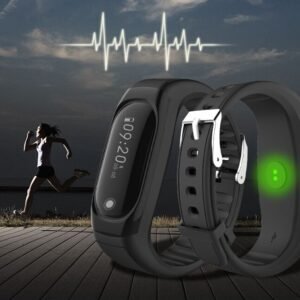Wearable Technology in Healthcare
Taking Control Over your Own Health
Around the world, there is an increasing number of people who have been diagnosed with lifestyle-associated diseases, such as hypertension and diabetes, which has created the need to monitor their health on a regular basis. In recent years, wearable technology devices have also become part of the healthcare industry.
There is a wide range of wearables, including many used for medical purposes. According to Healthcare Information and Management Systems Society, Inc. (HIMSS), wearable technologies can be innovative solutions for healthcare problems, enable the continuous monitoring of human physical activities and behaviors, as well as physiological and biochemical parameters during daily life.
The most commonly measured data include vital signs such as heart rate, blood pressure, and body temperature, as well as blood oxygen saturation, posture, and physical activities through the use of electrocardiogram (ECG), ballistocardiogram (BCG) and other devices. Wearable devices are usually designed to communicate with other devices, such as smartphones, which are typically used to collect information and transmit it to a remote server for storage and analysis.
Wearable technologies enable the continuous monitoring of human physical activities and behaviors, as well as physiological and biochemical parameters during daily life.
Some wearable technology applications are designed for prevention of diseases and maintenance of health such as weight control and physical activity monitoring. Wearable devices are also used for patient management and disease management. The wearable applications can directly impact clinical decision making. Some believe that wearable technologies could improve the quality of patient care while reducing the cost of care, such as patient rehabilitation outside of hospitals.
It has been proven that wearable devices have increased physical activity in individuals. Needless to say that physical activity is associated with many health benefits, and there is evidence for a dose-response relationship between PA participation and improved cardiorespiratory, metabolic, musculoskeletal, and mental health.
PA participation is also associated with a decreased burden of disease, such as colon and breast cancers, diabetes, and osteoporosis among others. Beyond disease prevention, increased PA is independently associated with a decrease in all-cause mortality in adults.
Thus, the evidence is strong that participation in PA not only improves health and prevents, treats, and/or alleviates many chronic diseases, but it can also be used to increase longevity and quality of life. Despite this, individuals with chronic disease often participate in low levels of PA; often, they do not meet international guidelines for suggested amounts of PA, and compared to healthy controls, chronic disease populations have worse PA engagement. There remains a disconnect between the research demonstrating the benefits of PA in individuals with chronic disease and the uptake of PA behavior
Wearable devices have great potential to be used in fall prevention among older adults.
By using self-monitoring wearable devices, patients are now capable of gathering crucial data related to various conditions, as well as other health parameters and then forward the data to their doctor for review. The medical wearable device market has been rapidly growing in recent years, not only because of the practical implications of such devices but in large part thanks to emerging economies such as India, China, and Brazil
This growing demand for wearables has generated a booming market, and now insurers and companies are seeing how supplying wearable health technology to their consumers and employees is beneficial.
Reference: Wearable Technology Applications in Healthcare: A Literature Review, Persuaded self-tracking with wearable technology: carrot or stick?,
[launchpad_feedback]



